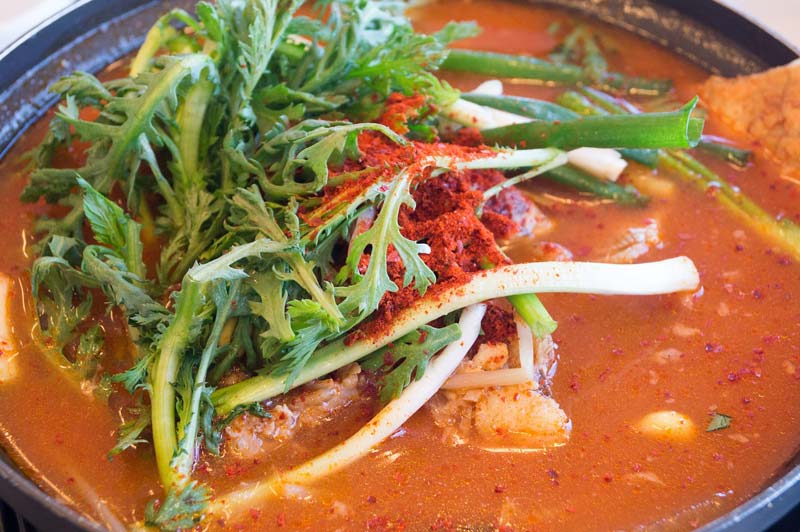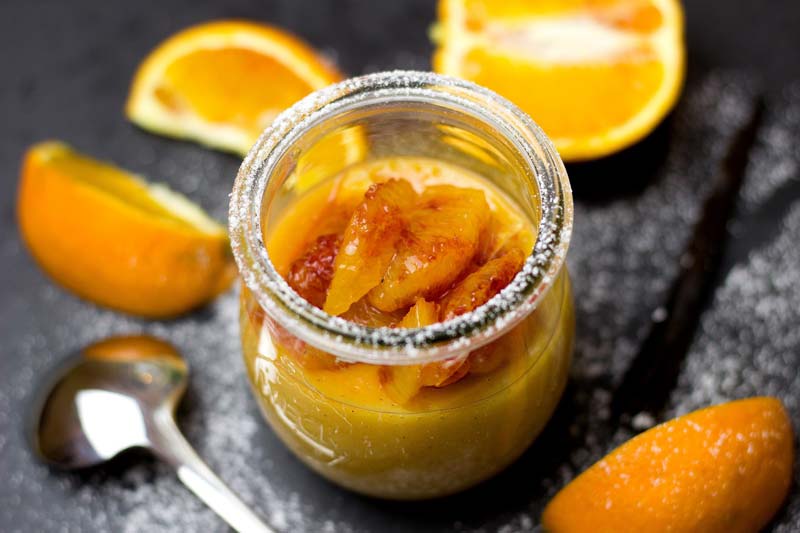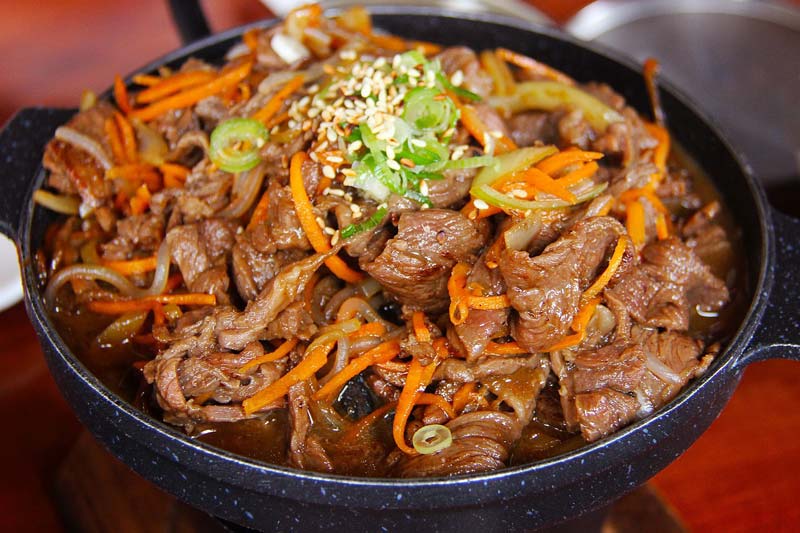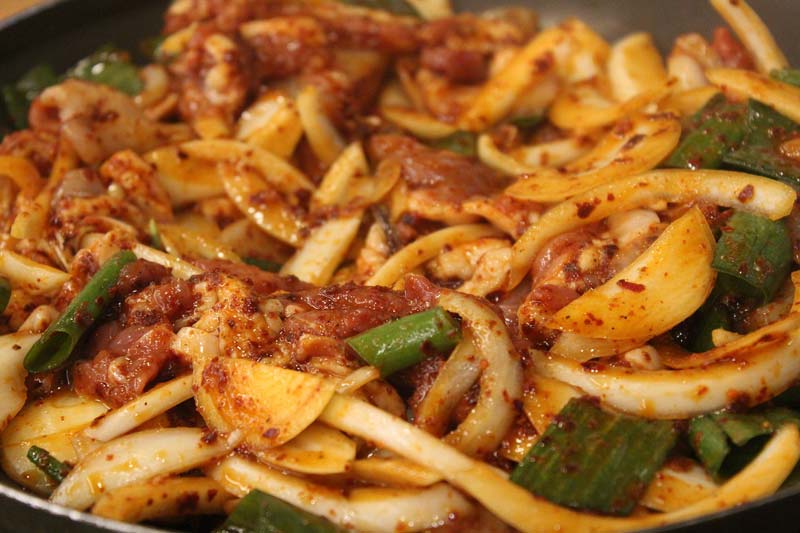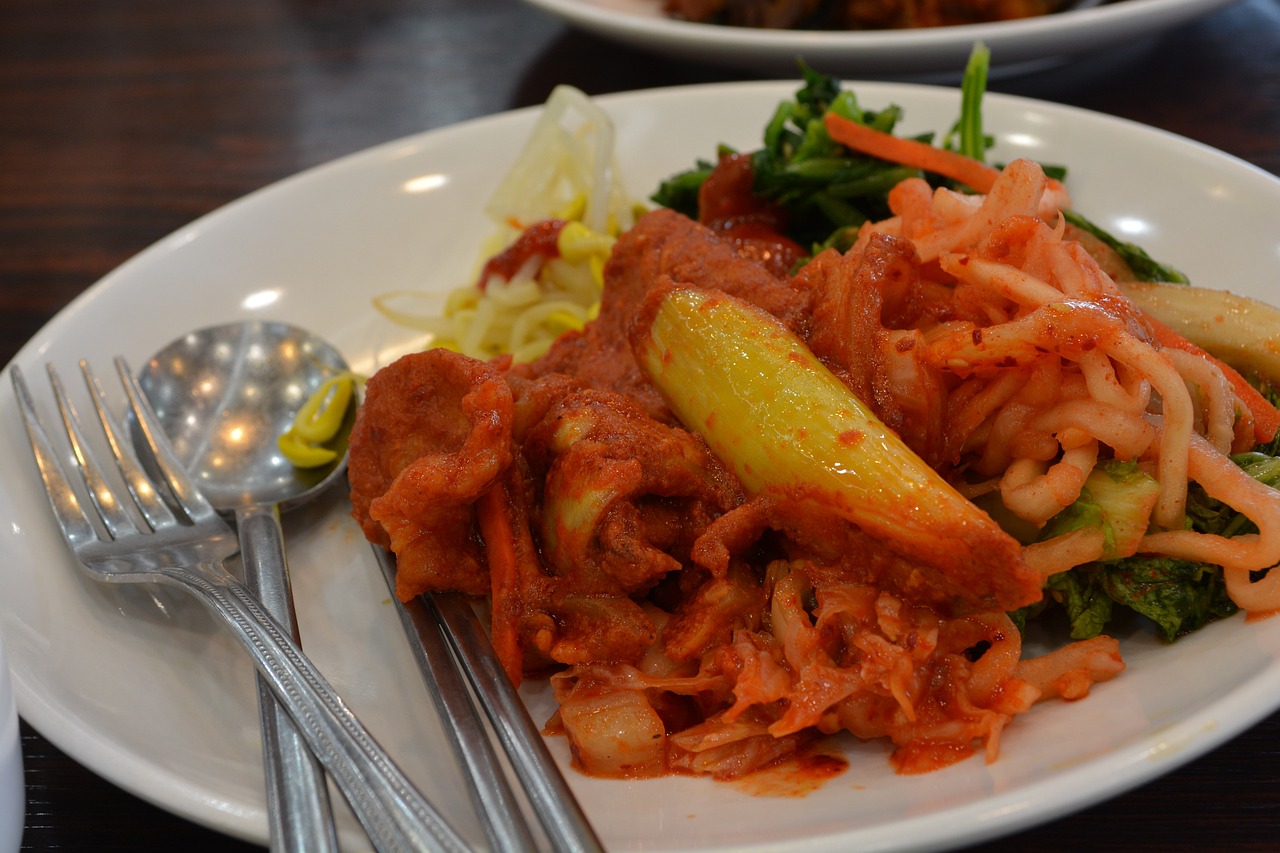What is Hot Pepper Paste?
Hot pepper paste (korean name : gochujang) is a unique Korean food boasting of an excellent harmony in nutrition, taste, and color. Its savory taste and rich protein come from soybeans, the primary ingredient, and its sweet taste comes from carbohydrates contained in glutinous rice, ordinary rice, or barley, which are also major ingredients. Powdered hot pepper gives it a hot taste and red color, and its salty taste comes from soybean sauce and salt

Gochujang. Spicy red chili paste, fot. LandAndTree
Hot pepper was first introduced to Korea in the middle of the Yi Dynasty. As hot pepper farming became common across Korea, Korean people began to make hot pepper paste. They already had the skill to process soybeans into soybean paste.
Korean people applied this food processing technology to making hot pepper paste. Indeed, hot pepper paste was a fusion food at that time because it combined the soybean processing technology with the hot pepper, which was a new food ingredient.
While western dressings are sometimes added to vegetables, Korean hot pepper paste is used more widely (in stews and sauces, as well as in vegetables). Hot pepper paste has a short history, but it has gone through many changes. Its use continually broadens as new recipes are developed to meet the tastes of modern people who prefer unique and spicy flavors.
Hot pepper paste was introduced to our diet later than soybean paste and soybean sauce. Solely developed by Korean people, Hot pepper paste is one of the native Korean seasonings. Before hot peppers were introduced to Korea, Chojang, a sauce used to produce hot taste, was made from sancho (Chinese pepper), choncho, and hocho (black pepper). After hot peppers were introduced, however, hot pepper paste replaced Chojang in producing hot taste.
Hot pepper paste is a traditional Korean food, developed in Korea after hot peppers were introduced in the 16th century. As hot pepper farming became common in Korea, hot pepper paste was made by adding a hot taste to the mixture of existing soybean paste and soybean sauce.
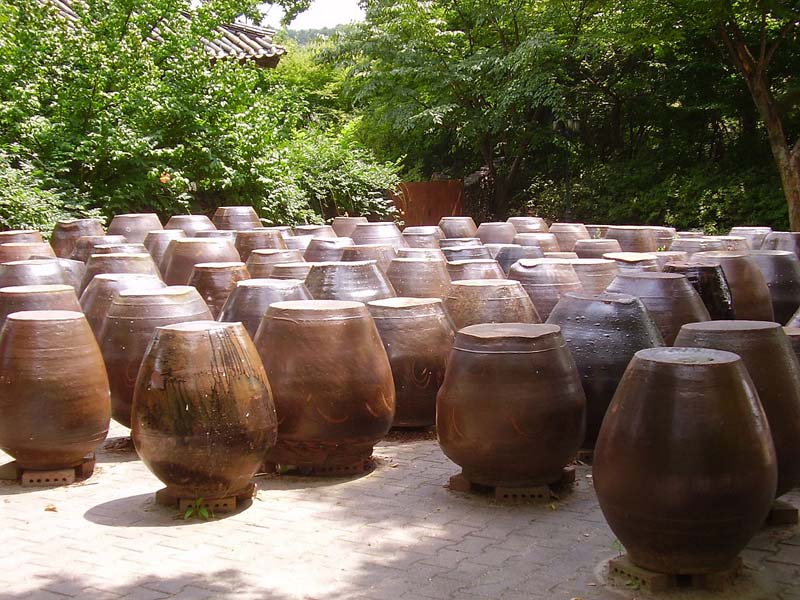
Jars used typically for fermenting Kimchi, Soybeans etc. These jars are also used for storing grains. fot. OlkhichaAppa, wikipedia
Hot pepper paste satisfies the appetite of Korean people, who live on vegetables rather than on meat, so many kinds of hot pepper paste have been developed.
Thanks to the wisdom of Korean ancestors, ways to make Hot pepper paste have continuously been developed. The primary ingredients are fermented soybean powder and hot pepper powder.
They are mixed with glutinous rice to make “glutinous rice hot pepper paste,” with ordinary rice to make “regular rice hot pepper paste,” with kaoliang to make “kaoliang hot pepper paste,” with barley to make “barley hot pepper paste,” with wheat to make “wheat hot pepper paste,” and with red beans to make “red bean hot pepper paste.”
In addition, coarse fermented soybean powder is mixed with coarse hot pepper powder to make “coarse hot pepper paste.” “Nurungji (scorched rice at the bottom of the rice cooker) hot pepper paste” has also been developed, and is loved by many people.
(fermentfood/fermentfood2_1_a.jsp)

